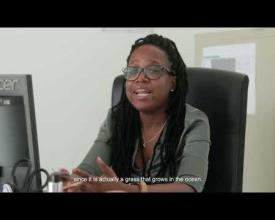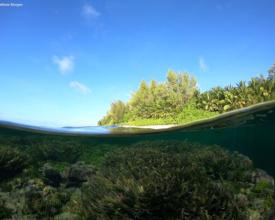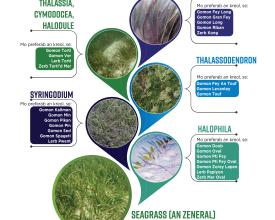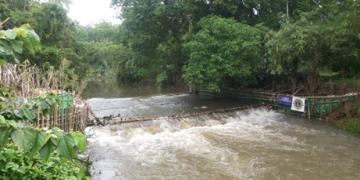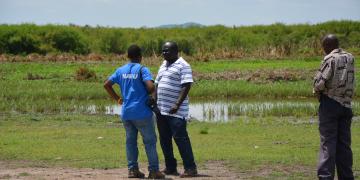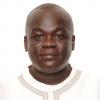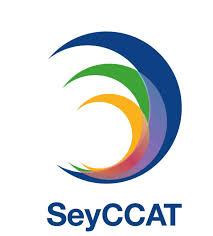
Integrating seagrass into the Seychellois Creole language
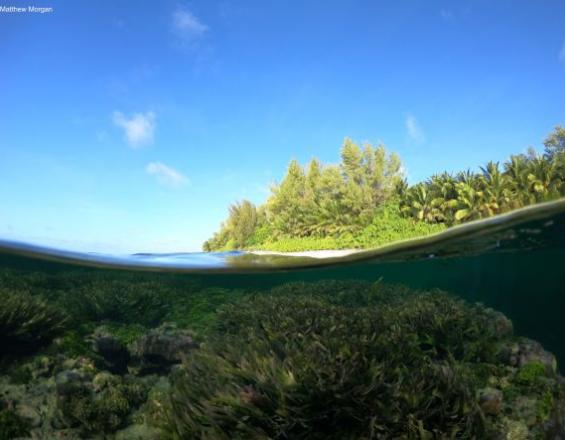
The Coastal Wetlands & Climate Change project, undertaken by the Seychelles Conservation and Climate Adaptation Fund, aims to provide more scientific data on Seychelles' seagrass as well as raise awareness on its benefits.
The main obstacle in engaging the population to have concern over the protection of seagrass was the fact that there was no creole name for seagrass. Several unofficial terms were used by fishermen and conservationists in reference to seagrass and its lifeforms - but non of them were official.
The project launched a national campaign to engage the nation to participate in naming seagrass and its five lifeforms. The campaign ran over social media platforms, the radio and in newspapers.
The outreach approach with local fishermen was harder given Covid-19 restrictions of movement. District administrators were mobilised to help circulate physical forms and to help fishermen fill them in.
The exercise proved to be a 'fun' way to get information as well as to raise awareness on seagrass.
Context
Challenges addressed
Generally, there has been a total disregard for seagrass. It has been trampled on, uprooted by motorised boating and affected in many other ways by other human contributing factors/behaviours.
Having Seychellois-Creole names and terms for seagrass integrates it into the culture of the locals. It entices ownership of it and engages the community to be more conscious and willing to protect it.
Location
Process
Summary of the process
Engaging the public to participate in the naming of a plant created a sense of ownership which was essential to the process but also for long term conservation of seagrass in Seychelles.
The collaboration with the Creole Academy validated the exercise and gave it national importance.
Building Blocks
The Public Survey
A nation-wide survey was carried out to reach different groups of the general public. The survey served two functions, 1. to gather information and 2. to engage people to understand what the exercise was about and to raise awareness on seagrass. Survey could be accessed on line via the website but was promoted on the radio, print media and social media.
Enabling factors
Awareness of the survey was important as was adding images in the survey document to make it friendly and also fun.
Lesson learned
Print copies of the survey were used to access the fishing community. District administrators were engaged to facililtate the process as they knew members of their dictricts more intimately.
If is wasn't for Covid-19 restrictions, the project would have solicitated the help of university students to reach more members of the fishing community.
Resources
The Creole Language Academy
The Creole Language Academy is the authorised body to approve new words into the Creole language. Officially, the collaboration with them was essential to elgitimise the exercise and to obtain official new words and terms for seagrass. On the other hand, the Academy's input was essential in ensuring that the cultural element of the naming process was maintained.
Enabling factors
Transparency was a key element in the process to ensure everyone was kept in the know of any developments. A committee of linguists, conservationists and scientists was created to filter findings from the public before submission to the Academy.
Lesson learned
To introduce a new word into a language, there's firstly an official process which needs to be followed. It is important to identify all the steps and actors which play a role in this exercise. The Committee which was set up was important in adding legitimacy and support to the process - all key players had to feel that they were involved and that was a good way to get them to collaborate and exhange ideas. This also faciliated the work of the Academy as the words and terms which were submitted had been well thought out.
Impacts
To institutionalise seagrass in the Seychellois-Creole language is to embed it in the culture and have the next generation be more familiar with it, within the local congtext.
This is imperative in getting the population to actively engage in protecting seagrass.
The results of the campaign are being felt today as hundreds of Seychellois are making reference to seagrass habitats in relation to coastal development matters.
There is a better understanding of the role of seagrass in economic growth; artisanal fishing, tourism, in climate change mitigation (carbon sequestration element of seagrass), in protecting our coastlines and much more.
Beneficiaries
Stakeholders in both the fishing and tourism communities benefit from seagrass conservation. The community at large as well, through education which allowed for better understanding of the country's coastal wetlands.
Sustainable Development Goals
Story
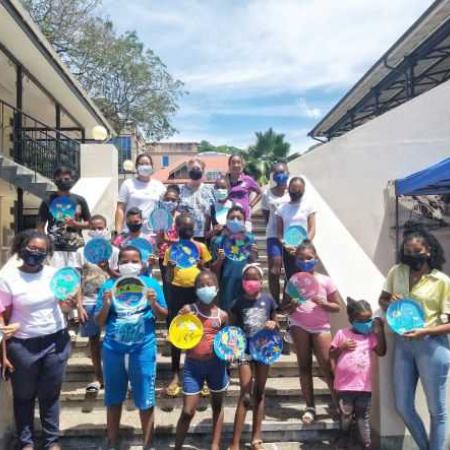
THE YOUTH: AN IMPORTANT TARGET GROUP
The last estimate of the Seychelles’ population
was at 99,202 (June 2021, National Statistics
Bureau), with almost 22% of it aged 14 and
under. The youth demographic in Seychelles is an
important target group for conservation efforts
since its members are the future custodians of the
island’s natural resources.
It was important for the project to introduce
seagrass in a way which would be relatable and
would entice interest. ‘Introduce’ is a relevant
word since very little was known about seagrass
on the islands outside the fishing community and
that of marine biologists and conservationists.
The extent of ‘little’ is depicted by the fact that
seagrass did not have a native Seychellois-Creole
name and it was often confused with seaweed.
Unrecognised – with no name; so where do we
start?
The key, as the project discovered, was to link it
to elements which were familiar to young people
and which also had the potential to evoke various
sentiments, such as sea turtles, fish, dugongs,
sea urchins, corals, and other forms of marine life
which they knew personally or had come to love
because of Disney classics like ‘Little Mermaid’ or
‘Finding Nemo’.
Age-appropriate activity books were developed
and designed, filled with dots-to-dots,
crosswords, puzzles and word searches – all with
an underlying theme; they are all connected to
seagrass. They books were used as educational
materials in a Wonders of Gomon Roadshow
school outreach programme which the project
carried out.
Unfortunately, due to restrictions imposed by
the pandemic in the past couple of years, only
two editions of the roadshow took place. The
first one was with a group of 13 school children
who attended the 2020 Natural Museum
Summer Holiday Club and the second with 27
members of the Anse Royale School Wildlife
Club.
Both sessions included seagrass presentations,
sorting out seagrass specimens previously
collected on beaches and delving into some
of the pages of the activity books. A field outing was
featured on the calendar of activities for the second
session where the students had a chance to snorkel
over seagrass beds in the shallow waters of Anse Aux
Pins beach.
Aside from learning to identify seagrass in
their natural habitats, this also provided a good
opportunity to re-enforce the importance of not
trampling over seagrass beds; a lesson which they
could also share with families and friends on future
beach outings.
